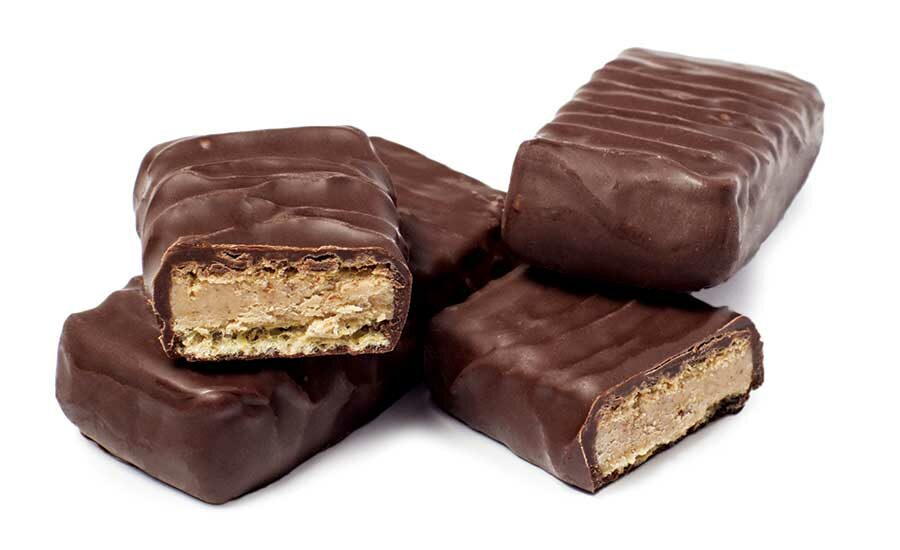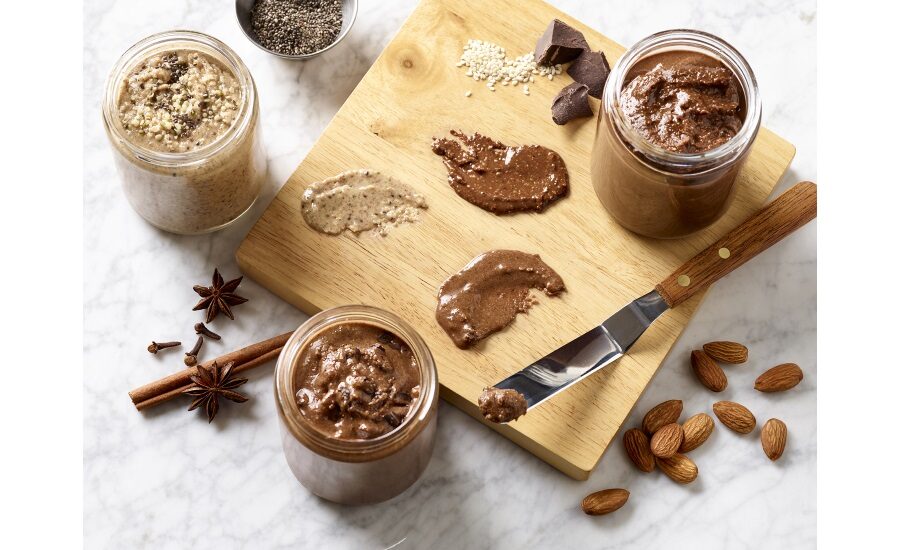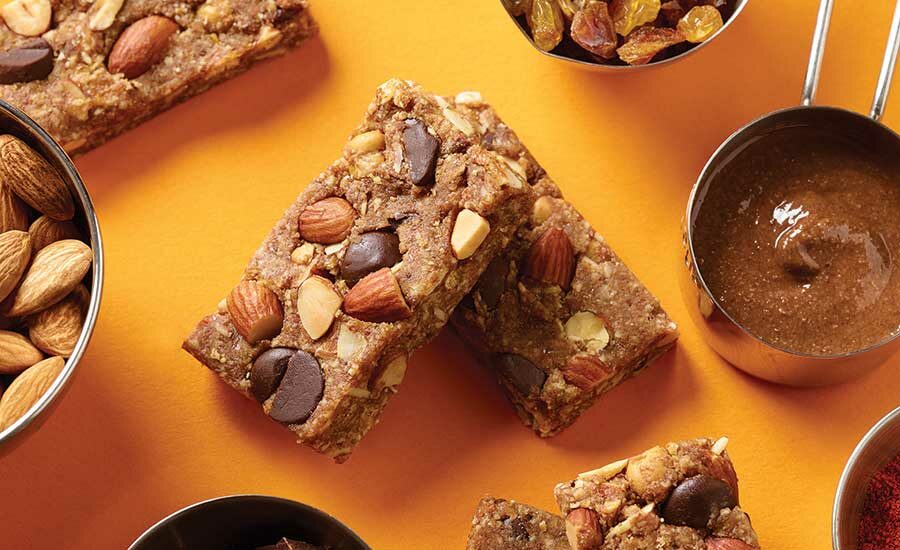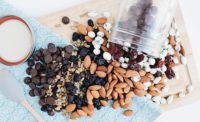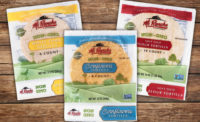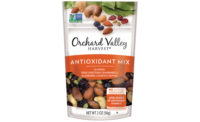It’s rare for a food product to check so many boxes in the minds of consumers that it becomes, essentially, universally beloved. But such is the case for snack and nutritional bars.
Practically across the board, sales were up in the bar category during the 52 weeks ending February 19, 2017, according to data from IRI, Chicago. Dollar sales of snack and granola bars overall grew 2.08 percent to reach $6.0 billion for the year, with varying degrees of growth in all subcategories:
- Nutritional/intrinsic health value bars were up 4.10 percent to $3.0 billion
- Breakfast/cereal/snack bars were up 0.77 percent to $1.2 billion
- “All other” snack/granola bars were up 41.94 percent to $65.2 million
Only the granola bars segment lost ground, down 1.47 percent to $1.7 billion.
The nutritional/intrinsic health value bars segment saw top gains by segment leader CLIF Bar, up 11.03 to $751.2 million and Quest Nutrition, up 30.07 percent to $193.6 million.
In breakfast/cereal/snack bars, LÄRABAR, a General Mills brand, was up 54.18 percent to $124.4 million, per IRI. But KIND LLC saw the most-significant growth in the segment, up 738.96 percent to $40.1 million.
General Mills, with its segment-leading Nature Valley brand, grew by 2.98 percent to $693.7 million in granola bars.
ThinkThin leads the all other snack/granola segment, up 10.97 percent in dollar sales to $25.0 million in sales. General Mills gained notable ground, though, up 222.01 percent to $16.8 million, per IRI.
Niche appeal
Enabling this strong growth is that fact that bar manufacturers have adopted a strategy that embraces offering a wide range of specific formulations targeted at different consumer bases.
According to Kyle Stuart, culinary scientist, Parker Products, Fort Worth, TX, bars highlighting a simple “all natural” status that used to cut it in the market are failing to distinguish themselves today. As a result, further niche differentiation has been a predominant trend transforming the bar market over the few past years.
As Jennifer Stephens, vice president of marketing, Fiberstar, Inc., River Falls, WI, explains, bars used to be a simple meal replacement or snack, and many were targeted toward athletes and active health enthusiasts. Today, the landscape is quite different. “Niche offerings have succeeded due to the need for category differentiation, as well as the loyal consumer bases they serve,” she says, with launches including bars intended for morning, daytime and evening consumption, as well as those formulated for paleo devotees, gluten-free individuals, sugar-free eaters, expectant mothers, kids, weekend warriors, dieters and more.
And each of these different consumer groups has specific needs, notes Greg Paul, industry marketing leader, beverage, bar and snack, DuPont Nutrition and Health, St. Louis. He points to weight strugglers seeking weight-management bars that taste and look more like a dessert, and health-conscious consumers who gravitate toward clean-label offerings as drivers in the market.
Many new brands are launching in this space all the time to fulfill these demands. Mike Bond, sales manager, Egan Food Technologies, Grand Rapids, MI, points out that the challenge is often that these newcomers struggle to find affordable equipment that can scale with their business. “We hear from a lot of companies that are trying to avoid co-packing, but can’t find a processing line they can afford.” As a result, companies like Egan Food Technologies are starting to offer approachable, entry-level lines.
Next-generation clean label
Clean label, of course, remains an important trend in this space, as it does in practically every snack food and bakery category. For Carol Lowry, senior food scientist, Cargill, Minneapolis, while clean label means different things to different brands and consumers, at its heart, it’s about transparency. “Consumers are looking for a simpler ingredient list that harkens back to things you might find in Grandma’s pantry. That’s the challenge facing product developers: How can you be innovative and still stay within those simple ingredients?”
Different manufacturers and suppliers have different answers.
The National Honey Board, Firestone, CO, points toward natural sweeteners like honey, an ingredient highlighted in Nabisco’s belVita Honey and Oats breakfast biscuits, Curate Harmonious Blend bars (with the ingredients—Marcona Almonds, Honey, Lemon, Quinoa, Balsamic Vinegar, Quinoa and Apricots—clearly noted on front-of-pack), ReGrained Honey Almond IPA bars (made with India pale ale), and Nature Valley Nut & Seed Honey Pecan bars.
The answer for Lowry is savory bars rich with vegetables, and new launches have included everything from green peppers and seaweed to olives and beets, she says. “More creative combinations of sweet and savory flavors are on the horizon, too, with fruits paired with ginger, nutmeg or even chile varietals.”
Tim Williams, director of sales and technical services, Lawrence Foods, Inc., Elk Grove Village, IL, also points to savory ingredients, calling out turmeric, an ingredient known for its health benefits and exotic flavoring.
Other ingredients pushing the envelope in bars include minimally processed fruits, nuts and seeds, says Stuart—especially for millennials.
A potential challenge, Paul notes, is that nuts and seeds oxidize on the shelf over time, causing “rancid flavor notes.” Previously, artificial preservatives may have been an answer. But that’s not an option for clean-label brands. One possible avenue? “Natural antioxidants like mixed tocopherols are becoming more popular, as they are on-trend and effectively extend shelf life and eating quality.”
Another challenge with including nuts is that all parts that come into contact with the product—belts, rollers, scrapers, side guides and more—must be changed completely and/or otherwise thoroughly cleaned to reduce the risk of allergen contamination, which is time-consuming. “In order to quickly continue production without the risk of allergens, Bosch Packaging Technology, New Richmond, WI, offers a second format set with a format parts carriage,” says Josua Schwab, product manager, adding that just four operators need two hours to change over and clean an entire four-leg system.
Personalized proteins
Boosting a bar with health benefits is certainly one way to appease a clean-label connoisseur. And protein is still a category mainstay. In a recent study from ADM, Chicago, snackers agreed that plant-based proteins add important health-and-wellness credentials and function to their snacking experience. “There’s a real opportunity for food formulators to leverage plant-based protein in snack foods,” says Mark Rainey, vice president, global food marketing.
That’s one distinction driving protein in a clean-label environment: plant sourcing. Paul notices that soy protein continues to be the most-popular plant protein because, while it certainly boosts the health profile of any bar, “the versatile ingredient also imparts improved texture and shelf life.”
Stephens notices a rise in other protein sources, like whole nuts, wheat protein, rice protein and pulse protein, which garner favor with the mass consumer.
And for the hardcore paleo consumer? “Meat bars made with lamb, beef, chicken, bacon and even bison are attracting attention,” says Lowry. There are even a few companies experimenting with insect protein, she adds.
Opportunities abound
In a category like bars, which appeals to so many different consumers with countless products on the market, there are three definite opportunities for differentiation going forward.
First, manufacturers can offer world-weary consumers something totally different when it comes to texture. If you ask Paul, this has translated to a revival of extruded bars over the course of the past two years. “They provide a versatile base that formulators can easily build from to produce a bar that is sweet, savory, crunchy, chewy or short.”
Stephens speculates that texture innovation in bars will follow strides made in the chocolate confection segment, with manufacturers offering varieties spanning chewy, nutty, crispy, hard, soft, fluffy and more.
Another way to play with texture is including multiple textures in one bar via layering or coating, which provides consumers more choice and an enhanced experience. “In the past, bars were limited to extrusion or sheeted products,” says Stephens. “Now, the combinations are endless.”
Molly Spence, director of North America, Almond Board of California, Modesto, CA, is encouraged by this development, as it opens the door for new almond butter products. While almonds have consistently been top choices for bar inclusions, butters bring something totally different to the table. “Depending on the type, almond butter can lend a creamy or crunchy texture as a filling or a clean-label-friendly binding ingredient in snack bars, and is a great partner to other flavors,” she says, adding that it can also be used as a drizzle, coating or topper.
Sugar-reduction efforts are yet another opportunity for growth going forward. With the FDA “added sugar” labeling rules looming, sugar will certainly be top-of-mind in this category, known for being better-for-you. “The market convinced consumers that any bar on the market is a healthy option for a snack or meal replacement,” says Stephens. In reality, some of them are laden with sugar. “There is room to improve these high-sugar bars by using natural high-intensity sweeteners and/or fiber to provide consumers a nutritious snack or meal replacement.”
On the other end of the spectrum, opportunities also exist for manufacturers looking to give consumers a better snacking option than a candy bar, but one that’s also still a treat and an indulgence. Stephens envisions possibilities for “light” versions of high-calorie and high-sugar options like pie, candy bars and macaroons, but in bar form.
Williams envisions bars further penetrating the evening snacking rotation. “We believe that with innovative formulation, the indulgence factor for bars can be upped to allow them to compete with other more-indulgent snacks during those dayparts,” he says. “Think French pastry in a bar format with a health side for balance. After all, balance is what this category is all about.”
Moroccan Spice Almond Bar
Adventuresome savory-sweet, ethnically inspired flavor profiles are in. This cold-formed snack bar is made with whole smoked almonds, chickpeas, dark chocolate chunks, dark chocolate tahini almond butter, golden raisins, dates and spices. It delivers 5 grams protein and 3 grams fiber per bar.
Ingredients:
- 18 oz. almonds, whole, roasted
- 4.5 oz. honey
- 12 oz. apricots, dried, whole
- 9 oz. golden raisins, whole
- 0.45 oz. cinnamon
- 0.15 oz. ginger, ground
- 0.06 oz. cayenne pepper
- 0.75 oz. flaxseed, ground
- 9 oz. almonds, smoked, large chop
- 3 oz. almonds, sliced
- 4.5 oz. golden chickpeas, dried, roasted, whole
- 1.2 oz. Dark Chocolate Tahini Almond Butter*
- 6 oz. bittersweet chocolate, 60% cacao, small chunks
- 6 oz. Medjool dates, pitted, medium chop
Procedure:
Place whole roasted almonds in food processor. Blend to a coarsely ground small crumble. Add honey, apricots, raisins, cinnamon, ginger, cayenne and flaxseed. Blend the mixture into a small ground texture that holds its shape when formed; don’t purée. Remove the mixture from processor and place in a mixer bowl. Add all remaining ingredients and gently combine. Press mixture into a 1/2 sheet pan, lined with plastic wrap, ensuring an even layer throughout. Chill for 30 minutes to one hour. Unmold the sheet pan onto a cutting board and cut into equal-sized bars.
* See www.almonds.com/food-professionals/recipe-center for Dark Chocolate Tahini Almond Butter formula
